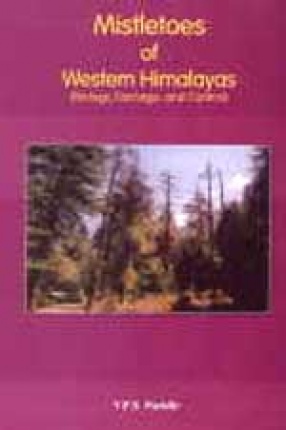Mistletoes, because of their unusual growth habits, have been the object of much curiosity for thousands of years. And only in the beginning of the 20 century their role as damaging pests to native and planted forests, parks, orchards, and ornamental trees could be established. Mistletoes are distributed allover the world and in many parts they are serious pests, but they are most abundant in the tropical areas of the world. In India a large number of mistletoe species (Ca 70; Hooker, 1886) are found, which extend from one end of the country from sea-shore (less than 50 m) to the other end in the high hills of Himalayas, up to 4000 m. Several species are found in abundance and some of them are serious pests of a large number of threes and shrubs. For example, Himalayan dwarf mistletoe (Arceuthobium minutissimum) is highly destructive to blue pine (Pinus wallichiana) in North-West Himalayas, and on some forest lands it has completely destroyed the blue pine. But proper attempts have never been made to control, and even to identify the damages caused by different species of these noxious parasites, except in two or three small areas in the country. Surprisingly, even the available scanty literature on Indian mistletoes has not been compiled in any book or review form. Thus the present book is the first comprehensive review of all available, earliest to up-to-date, information on the biology, damages and control of Indian mistletoes in general and on Western Himalayan mistletoes in particular.
Mistletoes of Western Himalayas (Biology, Damage and Control)
In stock
Free & Quick Delivery Worldwide
reviews
Bibliographic information
Title
Mistletoes of Western Himalayas (Biology, Damage and Control)
Author
Edition
1st ed.
Publisher
ISBN
8121106924
Length
viii+404p., Tables; Plates; Figures
Subjects







There are no reviews yet.